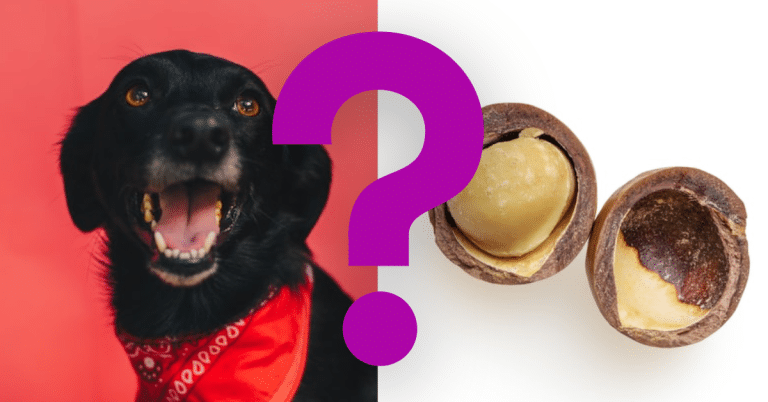Can Dogs Eat Bread? A Vet’s Opinion

Carbohydrates are an essential energy source, but can you feed Bread to your dog?
Although it is not a natural component of their diet and shouldn’t be a staple food, dogs can consume Bread in moderation. Dogs can eat Bread, but it’s crucial to pick the correct kind and give it to them in moderation.
Benefits of Bread for Dogs
Here are a few other benefits of giving Bread to dogs in moderation:
- Source of carbs: Dogs need carbohydrates for energy, which may be found in Bread. Yet it’s crucial to remember that dogs don’t need as many carbs in their diet as people do since they have a different digestive tracts. A diet that contains excessive carbohydrates can cause weight gain and other health problems in dogs.
- Dietary variation: Little portions of Bread can be added to a dog’s diet to provide some variety to their food and make mealtimes more pleasurable for them. Yet, it’s crucial to remember that dogs have different nutritional requirements from people and that the majority of their diet should be made up of nutritionally good dog food.
- Drug administration: Pills or other treatments that dogs might be hesitant to swallow can be disguised in Bread. To ensure the dog gets the total amount of the medication, ensure the medication is safe to provide with food and that they consume the entire piece of Bread.
- Source of fiber: Whole wheat bread is one form of Bread that can provide fiber to dogs. Fiber can assist in preventing constipation and is crucial for maintaining digestive health.
- Bread can be given to dogs as a training reward during training. Little bits of Bread can be a practical and affordable incentive for successful training session behavior.
- Easy to digest: Bread is comparatively more straightforward for dogs to digest than other human meals. It could be a helpful solution for dogs with sensitive stomachs or digestive problems.
Dogs should only consume a little Bread because it isn’t considered healthy. Although giving Bread to dogs may have certain benefits, it’s vital to realize that these are relatively tiny and could not outweigh the dangers.

How to Safely Give Bread to Dogs?
If you adhere to several rules, feeding Bread to dogs may be done securely. While giving Bread to your pet, keep the following things in mind:
- Please choose the correct Bread for your dog because not all is good for them. Avoid bread with a lot of salt, sugar, or additives. Because it has fiber and is simple to digest, whole wheat bread is a wise choice.
- Bread should be cut into tiny pieces: Big bits of Bread can be dangerous for choking and difficult for dogs to swallow. To make the Bread simpler for your dog to consume, cut it into little pieces.
- Reduce your dog’s intake of Bread; it shouldn’t be a regular part of his diet. It needs to be offered as a treat or an irregular snack. Overeating Bread can result in weight gain and digestive issues.
- Do not eat Bread with raisins or grapes: Grapes and raisins are poisonous to dogs and can result in renal failure. Be sure that none of these components are present in the Bread you serve your dog.
- Some dogs may be sensitive to Bread or may have a wheat allergy, so be on the lookout for symptoms of an upset stomach. After giving your dog bread, watch for vomiting, diarrhea, or bloating symptoms. If your dog displays these signs, stop giving him Bread immediately.
- Bread might be a valuable supplement for your dog’s diet if you want to add more fiber and carbs. It shouldn’t, however, be used as a substitute for a healthy, balanced diet.
- Consult your veterinarian: Consult your veterinarian if you have any questions regarding feeding Bread to your dog. Based on your dog’s particular requirements and medical problems, they can advise you on the right kind and quantity of Bread to feed them.
Will Bread Make a Dog Sick?
Although Bread alone is neither poisonous nor hazardous to dogs, certain canines that consume too much or are sensitive to wheat may become ill. Some dogs may have trouble digesting Bread since it is not a natural component of their diet, particularly if they have a sensitivity to or allergy to wheat. Also, Bread with a lot of fat or sugar might upset your stomach and make you throw up and have diarrhea.
For most dogs, it is typically acceptable to sometimes give them modest portions of plain, whole wheat bread. The Bread shouldn’t contain raisins or grapes since these foods can poison dogs. Instead, watch for any symptoms of stomach trouble in your dog. Should you have any questions, you can always consult a veterinarian.

Vet’s Summary
Giving dogs Bread in moderation as a source of carbs and fiber has benefits. Dogs rely on carbohydrates as a significant energy source, so adding Bread to their diet can help them get more of this macronutrient. Fiber, particularly in whole wheat bread, helps support healthy bowel motions and control a dog’s digestion. But it’s crucial to remember that Bread shouldn’t be a regular part of a dog’s diet and that overeating might result in weight gain and digestive issues. Also, specific varieties of Bread include substances that can be toxic to dogs, so not all Bread is healthy for dogs to consume.
In conclusion, Bread can be a source of carbs and fiber for dogs when given to them in moderation, but it shouldn’t be a regular part of their diet. Selecting the proper bread kind and watching for any indicators of stomach distress is essential. Providing probiotics to dogs has several advantages, including strengthening their immune and digestive systems, but it’s crucial to pick a high-quality supplement and speak with a doctor first. As usual, it’s better to feed dogs a wholesome, balanced diet that caters to their particular requirements and health issues.
Videos To Watch
Can dogs eat Bread? Watch the videos below to find out.






